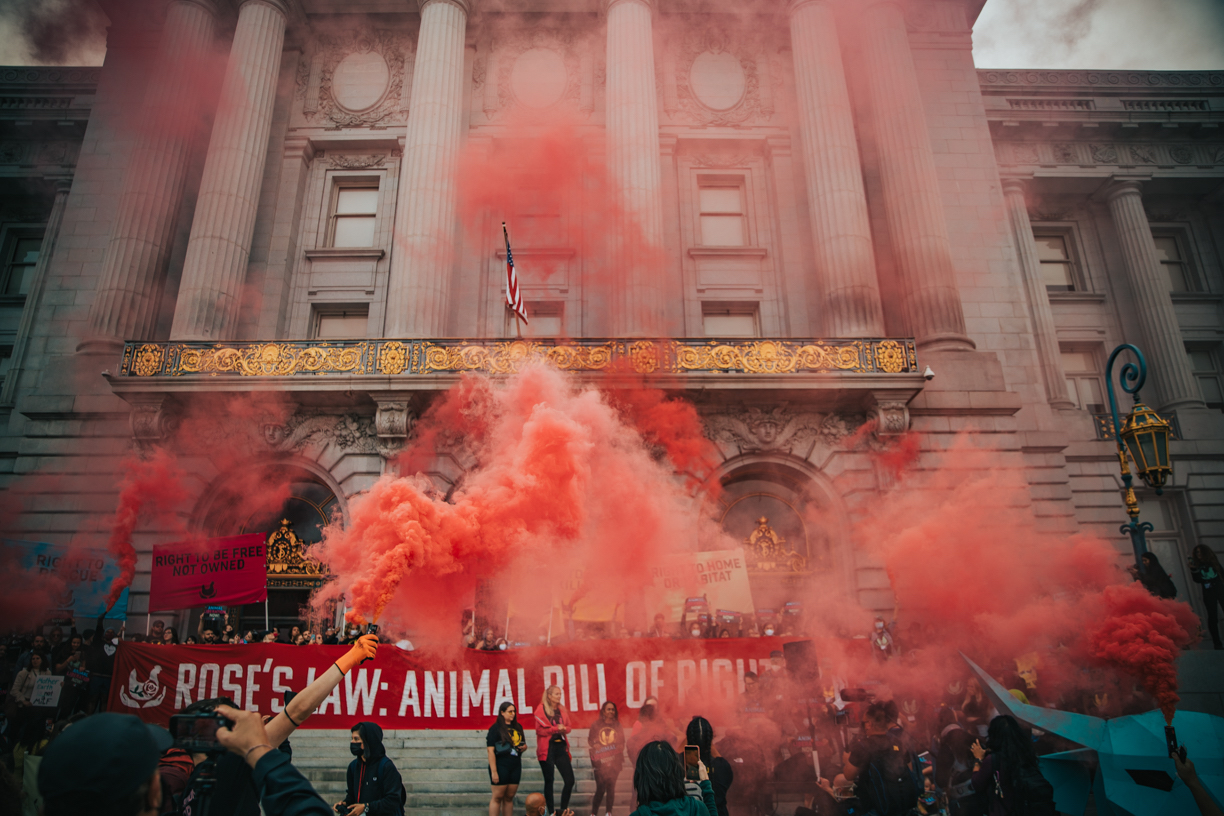Making the Liberation Pledge Work for You
Making The Liberation Pledge Work for You
By Orlando Torres

Depending on their circumstances, some vegans may find it too difficult to take the Liberation Pledge. They don’t want to see corpses on the table but don’t want to fight with their families either. They want to stop normalizing violence but don't want to run the risk of causing problems at work. Some of our friends are more conservative and won’t give up “meat” even for one meal, if only to deny the guilt that would come with accepting that their "food" is the body of someone who wanted to live.
Fortunately, there are different ways to make a strong statement against violence. The beauty of the Liberation Pledge is that it’s highly adaptable. Varying levels of difficulty can be applied to each particular activist, with all levels stimulating honest conversations about animal exploitation.
We should always encourage people to take the pledge, even if the easiest version is all they can do at the moment. The goal of the Liberation Pledge is not to isolate vegans, it’s to start conversations about speciesism.
Here’s my take on the varying levels of the Liberation Pledge, from most difficult to easiest:
Level 1: No places of violence - Vegan establishment only
Refuse to go to any restaurant that profits from animal exploitation or attend any events where there are animal bodies or secretions.
This is the hardest level, and it will be easiest for people who live in urban areas with many vegan options and who have veg*an/open-minded family members.
Level 2: No tables of violence - Vegan tables only
Refuse to sit at a table where there are animal bodies or their secretions.
People at this level are still be able to go to a restaurant or event with their friends but will sit at a different table or room when it's time to eat. In this way, the message is still being sent that it is unacceptable and offensive. Hopefully, others will join the activist at the "cruelty-free" table, and those numbers will continue to grow at future gatherings.
Level 3: No corpses on the table - Vegetarian tables only
Refuse to sit at a table with animal bodies.
Even though this level allows dairy and eggs to be on the same table, it still gets the point across that tortured corpses are offensive and disrespectful to the animals. This works for people with families who may try something vegetarian but refuse to give up dairy. This may be touted as a "compromise" to appease the dogmatic meat-eaters. This level is also simpler to implement because it's easier to notice that a table doesn’t have bodies of animals as opposed to knowing if dairy/eggs are ingredients in a dish.
Your Choice
Each activist will find different levels to be appropriate depending on their family and social circle. Even if you are starting with Level 3, the pledge opens up a dialogue and makes it clear how important animal liberation is. Most omnivores refuse to have a conversation about animal rights, but the pledge forces them to either discuss it or create tension. As long as we strive to move to higher and more strict levels, these honest conversations are the most important part.
Perhaps the best way to have the conversation with your family is to cook them a vegan meal and tell them in person that you have a very important concern you want to address. It is harder to dismiss you when you are asking them honestly to understand your compassion. Ask them: “would you sit at a table where someone is eating the body of an abused human baby?” They may not understand at first, but if you stay strong, they will eventually find the only way to relieve the tension is by leaving violence off their plates when you are present.
Other articles

Tulare County Dairy Farms Are Poisoning Latino Communities

The Case for Systemic Change




